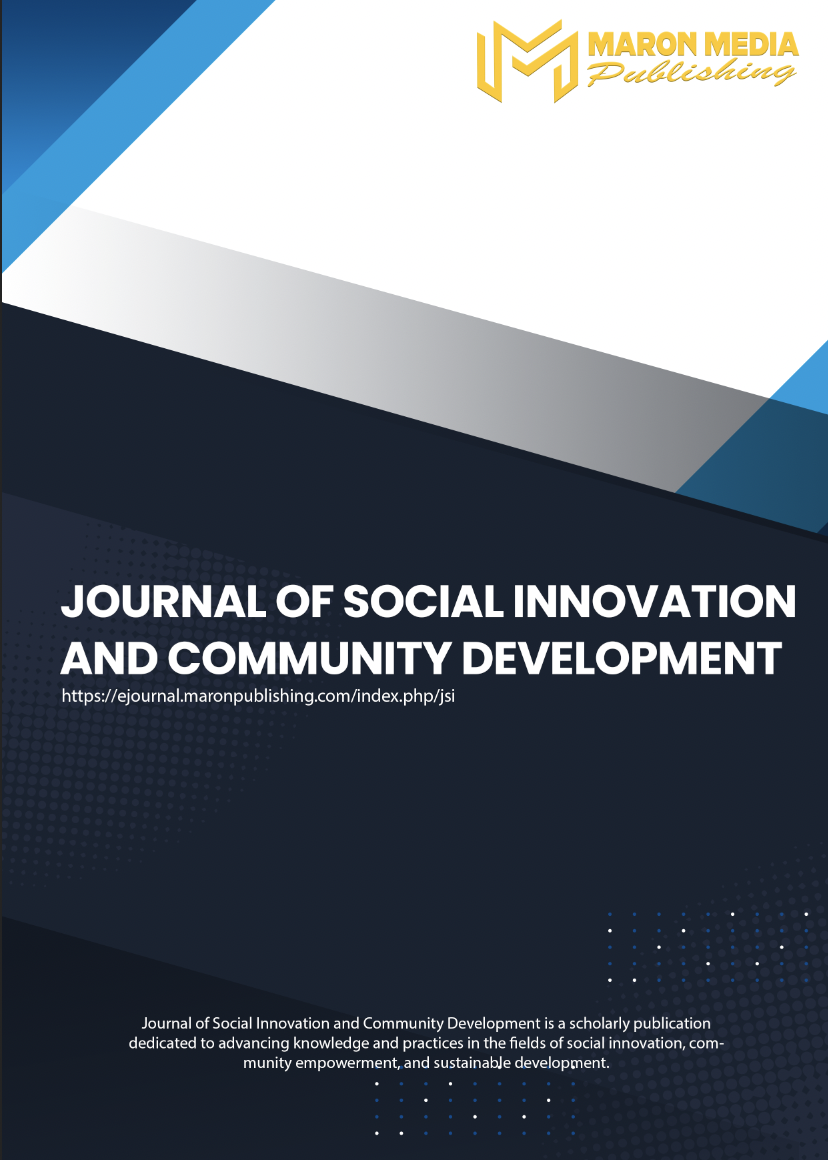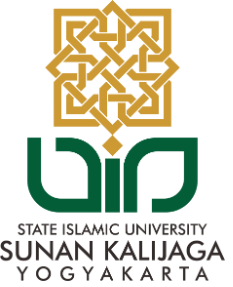Social Transformation of Riverside Communities along the Mahakam River through Asset-Based Empowerment Strategies
Keywords:
Asset-Based Community Development, Community Empowerment, Mahakam River, Social TransformationAbstract
Purpose – This study explores the social transformation of riverside communities along the Mahakam River through an Asset-Based Community Development (ABCD) strategy. These communities face socio-economic and environmental challenges, yet possess untapped local assets. This study aims to demonstrate how mobilizing community strengths—rather than focusing on needs—can foster sustainable empowerment and social change.
Design/methods/approach – A qualitative, participatory case study approach was employed in two riverside communities in Samarinda, Indonesia. Data were collected through in-depth interviews with local stakeholders, focus group discussions (FGDs) for asset mapping, and participatory observation. Thematic analysis was used to classify community assets and assess the empowerment process.
Findings – The findings reveal that community transformation occurred through increased awareness and mobilization of local assets such as traditional skills, social networks, cultural practices, and natural resources. The ABCD approach stimulated collective action, improved economic self-reliance, and strengthened social cohesion. Partnerships with external actors further enhanced local initiatives. However, infrastructure limitations and environmental threats remain ongoing challenges.
Research implications/limitations – The study is limited to two urban riverbank communities, which may constrain the generalizability of findings. Additionally, reliance on qualitative methods may introduce subjectivity in interpretation, though this was mitigated through triangulation.
Originality/value – This research offers a practical framework for implementing ABCD in urban riverine settings, contributing to both community development theory and practice. It underscores the importance of shifting development paradigms from need-based to asset-based strategies. The study also offers groundwork for future research on climate resilience and participatory governance in vulnerable ecosystems
References
Adamtey, R., & Frimpong, J. (2018). Social Capital as the Missing Link in Community Development Planning Process in Africa: Lessons From Ghana. Ghana Journal of Development Studies, 15(1), 92. https://doi.org/10.4314/gjds.v15i1.5
Aldrich, D. P., & Meyer, M. A. (2014). Social Capital and Community Resilience. American Behavioral Scientist, 59(2), 254–269. https://doi.org/10.1177/0002764214550299
Bawole, P., & Sutanto, H. B. (2023). Marginalized Community Effort to Improve Environmental Quality of Poor Settlement Along Riverbank. Jurnal Teknosains, 12(2), 111. https://doi.org/10.22146/teknosains.79456
Bridger, J. C., & Luloff, A. E. (2001). Building the Sustainable Community: Is Social Capital the Answer? Sociological Inquiry, 71(4), 458–472. https://doi.org/10.1111/j.1475-682x.2001.tb01127.x
Calderón, E. (2022). Marginal Cities in Conflict: Emerging Geographies of Spatial Accumulation. International Development Planning Review, 44(3), 265–288. https://doi.org/10.3828/idpr.2021.14
Davy, B., & Pellissery, S. (2013). The Citizenship Promise (Un)fulfilled: The Right to Housing in Informal Settings. International Journal of Social Welfare, 22(S1). https://doi.org/10.1111/ijsw.12033
Eriksson, M. (2011). Social Capital and Health – Implications for Health Promotion. Global Health Action, 4(1), 5611. https://doi.org/10.3402/gha.v4i0.5611
Gómez, D. C. (2020). The Third Digital Divide and Bourdieu: Bidirectional Conversion of Economic, Cultural, and Social Capital to (And From) Digital Capital Among Young People in Madrid. New Media & Society, 23(9), 2534–2553. https://doi.org/10.1177/1461444820933252
Hamidah, N., Rijanta, R., Setiawan, B., & Marfai, M. A. (2017). Physical Analysis of Formal and Informal Integration in Urban Riverside Settlement. Mimbar Jurnal Sosial Dan Pembangunan, 33(1), 115. https://doi.org/10.29313/mimbar.v33i1.2107
Haryono, H., Gustiano, R., Jusmaldi, Nasution, S., Wahyudewantoro, G., Yulianto, Y., & Rusdianto, R. (2024). Fish Diversity of Siluridae From Central Mahakam East Kalimantan Province, Indonesia. Iop Conference Series Earth and Environmental Science, 1436(1), 012002. https://doi.org/10.1088/1755-1315/1436/1/012002
Mathie, A., & Cunningham, G. (2003). From Clients to Citizens: Asset-Based Community Development as a Strategy for Community-Driven Development. Development in Practice, 13(5), 474–486. https://doi.org/10.1080/0961452032000125857
Moulds, S., Buytaert, W., Templeton, M. R., & Kanu, I. (2021). Modeling the Impacts of Urban Flood Risk Management on Social Inequality. Water Resources Research, 57(6). https://doi.org/10.1029/2020wr029024
Müller, A., Maher, C., Vandelanotte, C., Hingle, M., Middelweerd, A., López, M., DeSmet, A., Short, C. E., Nathan, N., Hutchesson, M. J., Poppe, L., Woods, C., Williams, S. L., & Wark, P. A. (2018). Physical Activity, Sedentary Behavior, and Diet-Related eHealth and mHealth Research: Bibliometric Analysis. Journal of Medical Internet Research, 20(4), e122. https://doi.org/10.2196/jmir.8954
Nyamari, T. (2024). Social Capital and Community Development. Ijhss, 3(1), 14–27. https://doi.org/10.47941/ijhss.1890
Pan, R., Littlefield, D., Valladolid, S. G., Tapping, P. J., & West, D. C. (2005). Building Healthier Communities for Children and Families: Applying Asset-Based Community Development to Community Pediatrics. Pediatrics, 115(Supplement_3), 1185–1187. https://doi.org/10.1542/peds.2004-2825q
Pane, A., Gunawan, B., & Withaningsih, S. (2023). Development of Kampung Susun Akuarium Based on Sustainable Housing Principles. Sustainability, 15(11), 8673. https://doi.org/10.3390/su15118673
Prince, E. (2024). Role of Social Capital in Community Development. Journal of Advanced Sociology, 5(2), 55–68. https://doi.org/10.47941/jas.1860
Sassi, M., & Hoitink, A. J. F. (2013). River Flow Controls on Tides and Tide‐mean Water Level Profiles in a Tidal Freshwater River. Journal of Geophysical Research Oceans, 118(9), 4139–4151. https://doi.org/10.1002/jgrc.20297
Story, W. T. (2013). Social Capital and Health in the Least Developed Countries: A Critical Review of the Literature and Implications for a Future Research Agenda. Global Public Health, 8(9), 983–999. https://doi.org/10.1080/17441692.2013.842259
Sutapa, I. D. A., Nurhidayat, A., & Prihatinningtyas, E. (2022). Mahakam River Potency as Raw Water to Support Drinking Water Services and Sanitation in the New Territories of the State Capital, East Kalimantan. Iop Conference Series Earth and Environmental Science, 1062(1), 012032. https://doi.org/10.1088/1755-1315/1062/1/012032
Woodhouse, A. (2006). Social Capital and Economic Development in Regional Australia: A Case Study. Journal of Rural Studies, 22(1), 83–94. https://doi.org/10.1016/j.jrurstud.2005.07.003
Woolcock, M., & Narayan, D. (2000). Social Capital: Implications for Development Theory, Research, and Policy. The World Bank Research Observer, 15(2), 225–249. https://doi.org/10.1093/wbro/15.2.225
Downloads
Published
Issue
Section
License

This work is licensed under a Creative Commons Attribution-ShareAlike 4.0 International License.

















